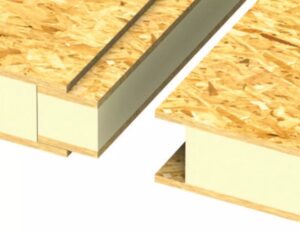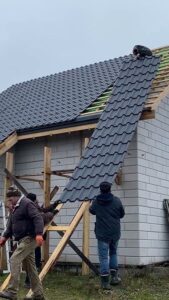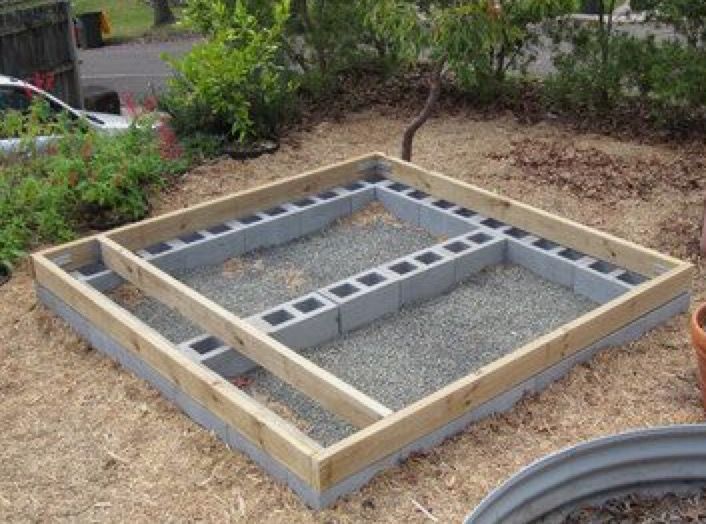Modular Components for Tiny Houses: Build Smarter, Not Harder
Building your own tiny house? Modular components are one of the smartest and most efficient ways to bring your dream to life. Whether you’re a hands-on builder or just looking to save time and effort, modular building elements can simplify construction, reduce costs, and ensure a quality finish.
In this guide, we’ll explore what modular components are, the different types available for tiny house construction, and the benefits (and drawbacks) of using them.
What Are Modular Components?
Modular components are pre-fabricated building elements designed to fit together with minimal on-site work. Think of them as building blocks — sections of a house that are pre-made in a factory or workshop and delivered ready to assemble. You can use them for walls, floors, roofs, and even interior features like stairs and cabinetry.
Using modular elements doesn’t mean you’re giving up creativity. In fact, many builders combine modular systems with custom features to create unique and efficient homes.
Types of Modular Components for Tiny Houses
Here are the most common types of modular building components you’ll encounter when planning your tiny house:
 1. Wall Panels
1. Wall Panels
Pre-insulated wall sections that include exterior sheathing, insulation, and sometimes interior paneling. Available in wood frame, steel frame, or SIPs (Structural Insulated Panels).
Pros:
-
Speeds up construction
-
Energy efficient (especially SIPs)
-
Reduces need for specialized tools
Cons:
-
Limited to set dimensions
-
Heavier than stick-built walls
-
Customization may require reengineering
2. Floor Systems
Pre-framed and insulated floor sections that can be placed on trailers or foundations.
Pros:
-
Perfect for mobile tiny houses
-
Factory precision = better leveling and durability
-
Often includes built-in plumbing routes
Cons:
-
May require crane or heavy equipment for placement
-
Must match your trailer or site dimensions exactly
3. Roof Modules
Pitched or flat roof components that come pre-framed or fully assembled.
 Pros:
Pros:
-
Easier and safer than rooftop work on-site
-
Compatible with solar systems or skylights
-
Waterproofed and weather-ready
Cons:
-
Transport challenges due to size
-
Less room for on-site design adjustments
4. Kitchen & Bathroom Pods
-
Fully built modules with plumbing, fixtures, and appliances pre-installed.
Pros:
-
Plug-and-play utility connections
-
Reduces complexity and time for these difficult areas
-
High-end finish possible without hiring specialists
Cons:
-
Expensive compared to DIY
-
Heavy and harder to modify
-
Requires precise layout planning
5. Interior Kits
Includes modular stairs, loft ladders, cabinetry, built-ins, and furniture elements.
Pros:
-
Saves interior build time
-
Matching design aesthetic
-
Custom storage solutions available
Cons:
-
May not fit oddly-shaped layouts
-
Costs can add up for premium kits
Why Use Modular Components in Your Tiny House Build?
Using modular components means:
-
Faster build time – days or weeks instead of months
-
Greater precision – factory cuts reduce human error
-
Less waste – optimized materials and production
-
Easier DIY – even beginners can handle prefab modules
-
Energy efficiency – modern insulation and air-tight design
Things to Consider Before Choosing Modular Components
-
Delivery access – Can your site handle large shipments or cranes?
-
Permit requirements – Prebuilt systems still need code compliance.
-
Design flexibility – Some modules limit layout changes.
-
Upfront cost – Modular components often cost more initially, but save in labor.
Final Thoughts: Modular Freedom, Tiny House Style
Modular components are a great way to simplify the building process while ensuring a professional finish for your tiny home. Whether you choose a full modular build or just integrate key components like wall panels or bathroom pods, you’ll benefit from speed, quality, and convenience.
Looking to get started? Check out our recommended suppliers and modular kit reviews to find the perfect match for your project.
